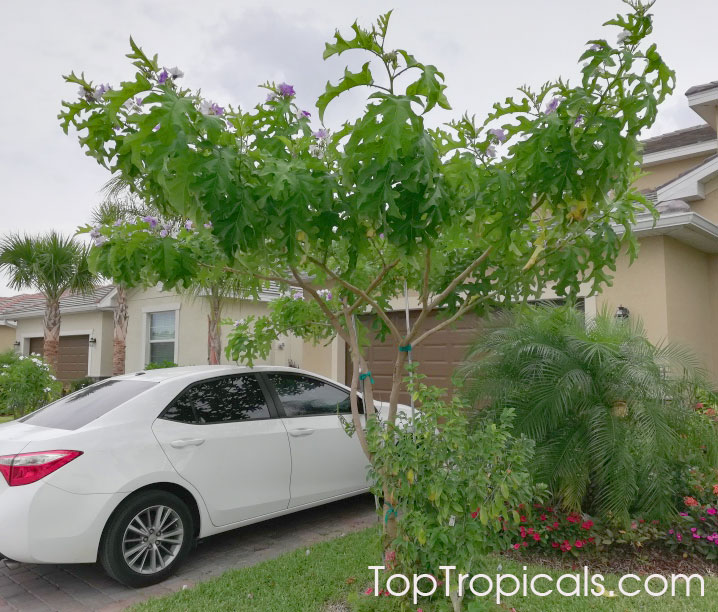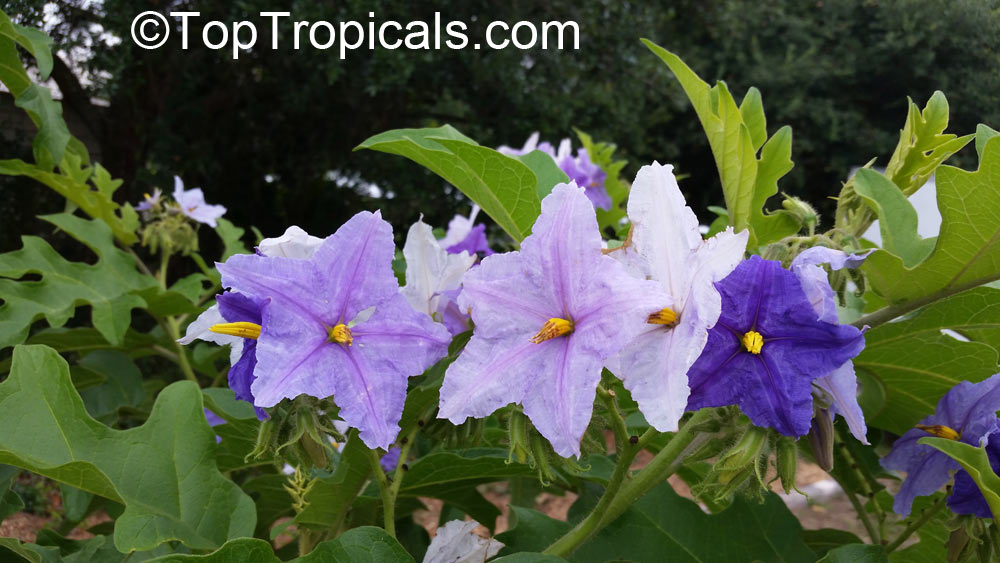Garden Blog - Top Tropicals
Fun Facts: Cacao beans
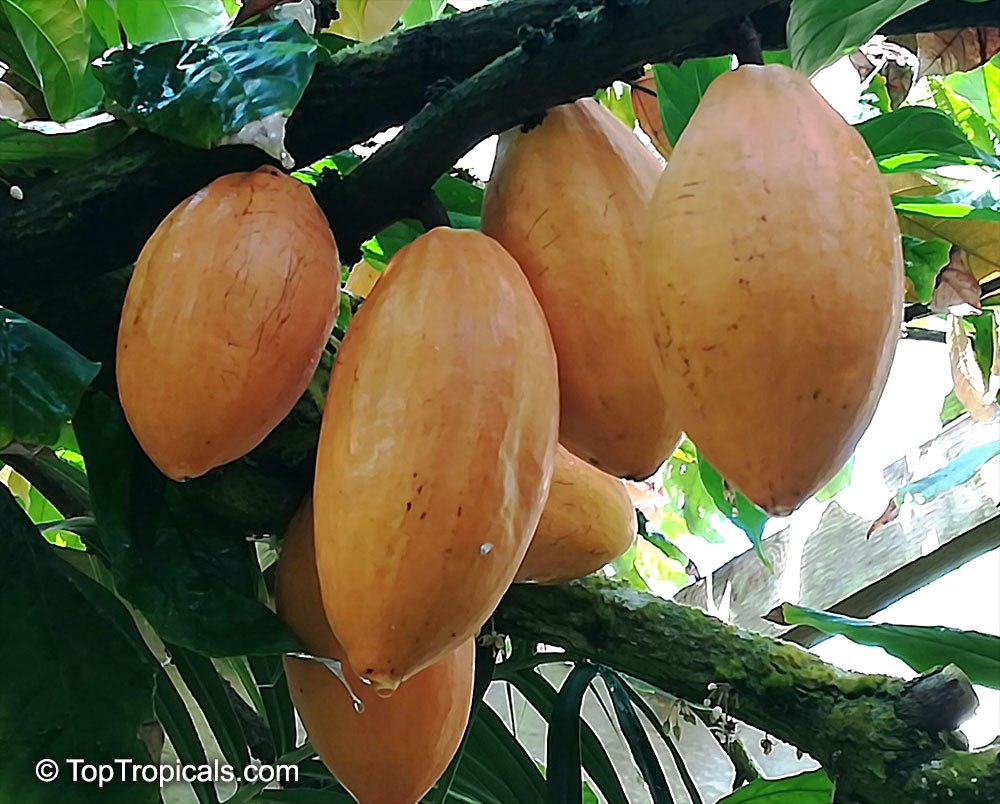
Cacao Chocolate Tree (Theobroma cacao)
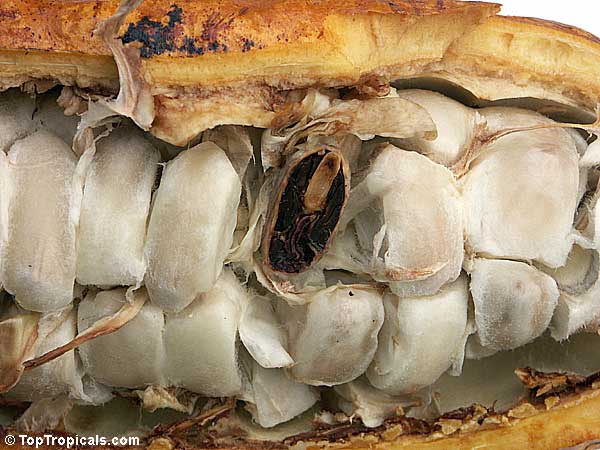
Cacao Chocolate Tree (Theobroma cacao)
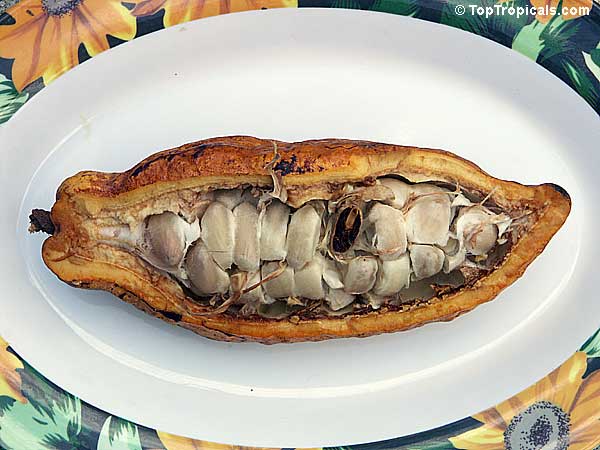
Cacao Chocolate Tree (Theobroma cacao)
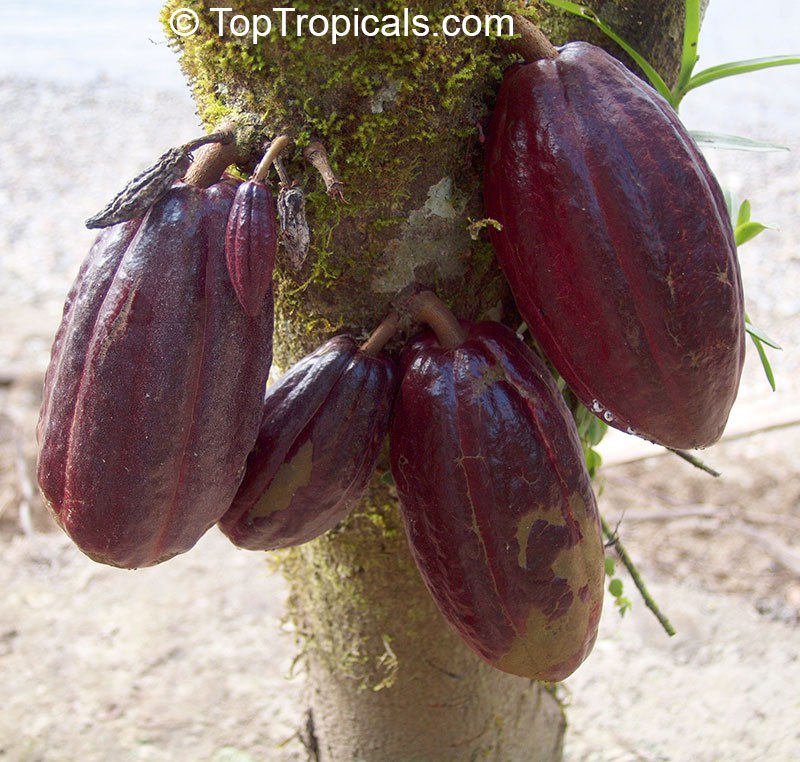
Cacao Chocolate Tree (Theobroma cacao)
🛒Get your own Chocolate Tree
#Fun_Facts #Food_Forest
JOIN 👉 @TopTropicals
Fun Facts About the Guava Flower
Guava Flower
- 🌸 Frilly and Fabulous - Guava flowers may be small, but they're packed with fluffy white stamens that give them a soft, powder-puff look.
- 🌸 Pollinator Magnet - Bees and butterflies love guava blooms, making them a great addition to a pollinator-friendly garden.
- 🌸 Scent-sational - The flowers have a light, pleasant fragrance that adds a touch of sweetness before the fruit even arrives.
- 🌸 Bloom to Fruit - Each flower can turn into a delicious guava fruit, making them both beautiful and productive.
- 🌸 Part of the Showy Family - Guava (Psidium) belongs to the Myrtaceae family, which also includes eye-catching bloomers like Eucalyptus, Bottlebrush (Callistemon), and the stunning Rose Apple (Syzygium).
📚 More from previous posts about: #Guava
🛒 Shop Guava Trees
#Food_Forest #Guava #Fun_facts
🔴 Join 👉 TopTropicals
Date:
How to get shade quickly... and stay away from oaks
Q: I just moved from Tennessee into a new house in Florida and there are no trees on the property, the yard is brutal hot. What can I plant so I have some shade real quick? I like Florida shady oaks, how long will they take to grow?
A: First
of all, do not rush into oak solution. Oaks are beautiful shade trees, however
they have at least 2 problems:
a) Oaks are slow growers and unless you are willing to wait some 20
years... you won't get that desirable shade that quickly.
b) We have hurricanes in Florida... sometimes. A hurricane can damage
any tree, however with oaks it may be the worse case scenario - the branches
of those giant trees are huge, hard and heavy and in unfortunate situation
when you need to remove or trim a broken tree, it may cost you... a few thousand
dollars.
These are solutions that are more economical and practical:
1) Selection. If you have room, get one of these most popular Florida shade trees: Royal Poinciana, Golden Shower, Hong Kong Orchid Tree, Red Kapok, Bottlebrush, and many others. See full list of fast growing shade trees. Or simply get a Mango Tree and have delicious fruit too! Many varieties of Mangos are very large and fast growing.
2) Do it right. Even if you are planting a smaller tree, 1-3 gal
size, it may become a nice shade tree within 2-3 years and start providing
your driveway with desirable shade. The keys for fast growth are -
a) Good soil. Dig as big hole as possible and fill it with good
rich soil containing compost. See planting instructions PDF.
b) Water. Do not rely on sprinklers and rains. Water your tree
daily for the first week, then at least twice a week for another month. After
that, irrigation system will be enough.
c) Fertilizer. Put a few handfuls of fertilizer in a planting hole. Then fertilize once a month during warm
season. Apply micro elements for even better results and faster growth.
3) Ask experts. Contact our office for advice. We will suggest the most suitable shade tree for your yard based on features of your property: location, soil, exposure, etc.
Date:
Full Sun Garden vs Shade Garden
"Someone is sitting in the shade today because someone planted a tree a long time ago." (Warren Buffett)
Q: I live in California and I have a large area of my garden in full shade. Are there any plants that will be happy there? I am looking for something colorful. I also have a smaller area in front of the house that has full sun almost all day long, but I am afraid this can be too hot for flowering plants? Can you recommend something?
A:
Full sun gardens have a strong, bright look while shade
gardens have cooler, subdued appearance. Both types of
gardens are fun to design and maintain as long as you pick
the right plants.
Full Sun Garden is the easiest to grow. Depending
on exposure, it may require some plants that can tolerate
the hottest summer days and the dry conditions in your
area. The good news is, the majority of tropical and
subtropical plants prefer full sun, so you have a large
selection to pick from - fruit trees, flowering trees,
shrubs, vines, and small perennials. The more sun, the
more flowers and fruit you will get! However, keep in mind
that sun gardens require more water, but generous mulching
will help to minimize watering.
Shade Garden is much more restful in appearance,
but sometimes may be a little more difficult to work with.
As shade trees grow bigger and thicker, it may become too
dark; nothing will grow in total darkness. In this case
you need to prune back some branches to let more light in.
Filtered sunlight or dappled light coming through the
leaves of the trees is beneficial and considered light
shade, which would be the best light conditions for shade
loving plants to thrive. Although shady cooler spaces
attract more insects and will require more attention to
control them, they also have some advantages over sun
gardens. You can enjoy working in cooler conditions, and
your garden will require less water. Many foliage plants
look more deeply colored and healthier than in full sun;
white flowers shine instead of looking washed out!
Our favorite shade plants are fragrant brunfelsias , clerodendrums, and of course
colorful gingers and heliconias. You
may also consider ornamental foliage of Calatheas, lush Alocasias, Colocasias, and colorful Cordylines. Check out our shade loving plant list for
more colorful suggestions. These are also great for indoor
gardens!
Date:
How to Live Longer? Surround Yourself with Plants!
Gardening not only helps you stay active and healthy but can also be a fun and rewarding way to extend your life. Let nature nurture you!
Living Longer with Green Spaces
A study by the Barcelona Institute for Global Health found that a 10% increase in vegetation within 1,600 feet of your home can lower your death risk by 4%.
Why Gardening Could Help You Live Longer
- Nature Exposure: Being outside boosts your mood.
- Exercise: Gardening is a great workout.
- Healthy Eating: Grow and eat your own fresh produce.
- Mind Exercise: Gardening can reduce stress and keep your mind sharp.
Gardening and Longevity
- Many centenarians (people living to 100) garden.
- In "blue zones," where people live longer, gardening is common.
- Gardening promotes daily exercise and a plant-based diet.
Natural Movement vs. Gym Workouts
- 100 years ago, 90% of jobs involved physical activity; today, only 10%
do.
- Walking 2 hours a week can lower the risk of major diseases.
- Gardening offers fresh air, exercise, and fun.
Gardening vs. Gym
- Gardening can be as effective as gym workouts.
- Research shows 3 hours of gardening equals a 1-hour gym session.
- Tasks like weeding, digging, and mowing burn significant calories.
Calories Burned in 1 Hour of Gardening
- 340 cal: Chopping wood, using power tools, tilling, mowing with a hand
mower, shoveling.
- 272 cal: Carrying wood, digging, clearing land, wheelbarrow work.
- 238 cal: Blower operation, planting, trimming, weeding.
- 224 cal: Raking and sacking leaves.
- 136 cal: Picking fruit, gathering tools, walking.
- 102 cal: Fertilizing or seeding a lawn.
- 34 cal: Watering plants.
Fun Facts
- Half an hour of weeding burns 150 calories.
- Gardening five hours a week burns 700 calories.
- Over a year, that's 20,000 calories, equivalent to running seven
marathons.
- A lifetime of gardening can burn a million calories.
Date:
Quick shade for your driveway
Q: Please help! We just moved into a new house in Florida and don't have any mature trees yet, but the sun is already brutal! Can you suggest any super-fast growing shade tree that can make shade over my driveway as soon as possible?
A: Check out Giant Potato Tree - it is very fast growing, has very large leaves plus very pretty purple flowers as a bonus year round! The pictured tree was planted from 3 gal only 6 months ago, and already covers with shade the whole car. It is small to a medium size tree, but one of the fastest growing. If you are looking for a larger tree and willing to be more patient, here is the full list of tropical and subtropical fast growing shade trees. Most of them may take a few years until they reach a mature size, however, in order to enjoy your shade tomorrow, you must plant the tree today!
Secret Banana Daiquiri Recipe: Healthy Never Tasted So Good!
🍹 Banana Daiquiri Recipe Ingredients:
- · 1 ripe banana
- · 2 ounces light rum
- · 1 tablespoon sugar
- · 1 ounce lime juice
- · 1/2 ounce triple sec (optional for added depth)
- · Ice cubes
- · Slice of lime or banana for garnish
- 🍹Instructions:
- · Prepare the Banana: Peel the banana and cut it into chunks.
- · Blend the Ingredients: In a blender, combine the banana chunks, light rum, sugar, lime juice, and triple sec.
- · Add a handful of ice cubes. Blend on high until the mixture is smooth.
- · If the mixture is too thick, you can add a small amount of water or more lime juice to adjust the consistency.
🍹Garnish and Serve:
· Pour the mixture into a chilled glass. Garnish with a slice of lime on the rim of the glass or a small wheel of banana. Serve immediately and enjoy the refreshing tropical flavors!- · This Banana Daiquiri is not only refreshing but also offers a creamy texture and a perfect balance of sweetness and citrus. It's a fantastic choice for hot days or when you're in the mood for something a bit exotic. Cheers!
📚 About Banana from previous posts:
- 💋Top Ornamental Banana Varieties - Which One Belongs in Your Garden?
- 💋Best Edible Bananas to Grow - Sweet, Unique, and Delicious!
- 💋How Many Banana Varieties Can You Grow? (More Than You Think!)
- 💋Top 10 fruit you'll ever need for your health benefits: #5 Banana growing and fun facts
- 💋How to make tasty Carambola Banana Whip
- 💋Why Bananas? They are good for you and are fun to grow
- 💋Bananas help you feel fuller and enhance your mood
🛒 Banana Bliss Starts Here
#Food_Forest #Recipes
🔴 Join 👉 TopTropicals
How many varieties of Bananas can I grow?
Bananas (Musa sp.) in containers
- 💛 At Top Tropicals, we have a few dozen varieties of Bananas (Musa sp.) - ranging from popular commercial and plantain types to spectacular ornamental bananas with colorful, tropical foliage.
- 💛 Banana plants are a favorite in Southern gardens, indoor plant collections, and greenhouses in cooler climates. Fast and easy to grow, they transform any space into a tropical paradise in just one season and can produce fruit for you in as little as 8–18 months after planting.
- 💛 Bananas are a powerhouse of nutrition, packed with potassium for heart health, fiber for digestion, and vitamins B6 and C for immunity. They’re a natural energy booster, great for snacks, smoothies, and even baking. Plus, their tryptophan content can improve your mood, and their low sodium helps regulate blood pressure.
- 💛 With so many delicious and unique varieties, growing different types of bananas lets you enjoy a range of flavors, textures, and uses - whether fresh, blended, or cooked - making them a must-have in any tropical or indoor garden!
Discover the most popular edible and ornamental bananas in our next post 🔽
🎥 Banana selection today at TopTropicals farm. Come over to pick the best one!
📚 More about Banana from previous posts:
- 💋Top 10 fruit you'll ever need for your health benefits: #5 Banana growing and fun facts
- 💋How to make tasty Carambola Banana Whip
- 💋Why Bananas? They are good for you and are fun to grow
- 💋Bananas help you feel fuller and enhance your mood
🛍 Shop Banana varieties
#Food_Forest #Bananas
🔴 Join 👉 TopTropicals
Date:
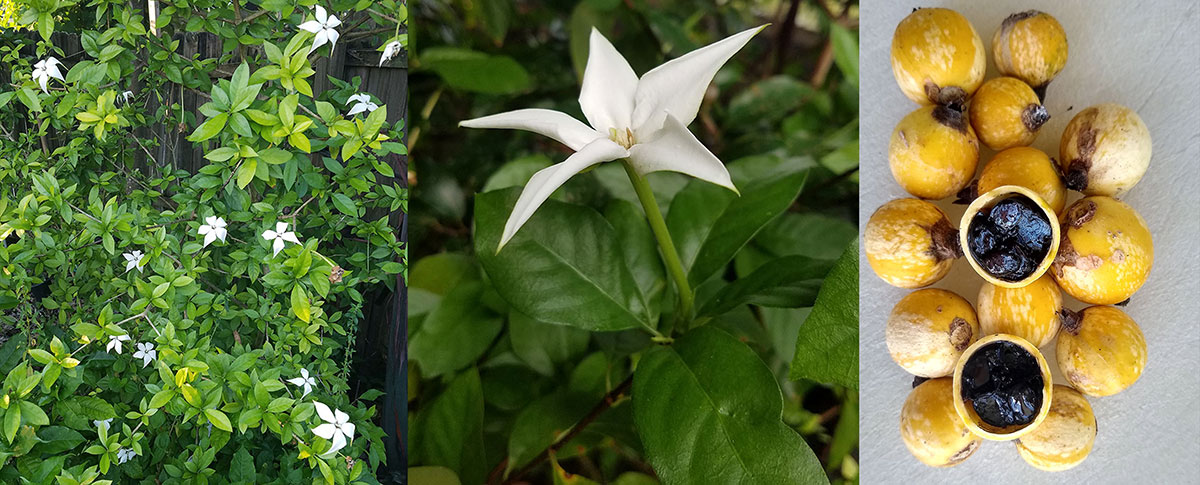
Randia formosa - Blackberry Jam Fruit Tree with Flowers and Ripe Fruit
You know how some plants just surprise you?
That's Randia formosa - the Blackberry Jam Fruit Tree. At first, it just looks like a cute little gardenia-type shrub. Glossy leaves, sweet white flowers. Nice enough. But then the fruit shows up… and you crack one open and go, “Wait - this tastes like jam?!”
And not just any jam - like real, fresh blackberry jam. No sugar, no cooking. Just soft black pulp inside this golden little fruit. It's weirdly satisfying. One of those things you make everyone taste just to see their face.
What's even cooler is how easy it is. This thing starts blooming and fruiting when it's barely 2 feet tall. You can grow it in a pot on your porch, or even inside if it gets enough light. And while most of your other plants take the winter off, this one keeps going - flowers, fruit, the whole show.
If you've got a spot with filtered light and a little curiosity, it's absolutely worth a try. Honestly, it's just… fun.
This rare South American evergreen shrub checks all the boxes: fragrant, compact, easy, and edible.
✅ Grows in pots ✅ Indoors ✅ Small yards
Randia formosa – Blackberry Jam Fruit Tree – FAQ
What is Randia formosa?
Randia formosa, also known as Blackberry Jam Fruit or Jasmin de Rosa, is a compact tropical shrub that produces fragrant white flowers and small yellow fruits filled with soft, black pulp that tastes remarkably like blackberry jam. It belongs to the Rubiaceae family, the same as Gardenia and Coffea.
Why gardeners love Randia
- Delicious jam-flavored fruit – no sugar needed.
- Compact grower – perfect for patios and indoor spaces.
- Fast results – blooms and fruits within 1–1.5 years.
- Big yield in a small pot – 25–30 fruits at once!
- Fall–Winter performer – keeps going when others stop.
- Kid favorite – fun to grow, fun to eat.
What does the fruit taste like?
The pulp inside the fruit tastes just like fresh blackberry jam - sweet, tangy, and rich. It is edible fresh, without any processing or sweeteners, and is loved by both kids and adults.
How big does the plant get?
In the ground, Randia formosa typically reaches 4 to 5 feet tall. In containers, it usually stays smaller, around 3 to 4 feet, making it perfect for small gardens, patios, or indoor growing.
How soon will it fruit?
Very quickly! This is one of the fastest fruiting tropicals. Plants begin to flower and produce fruit within two years from seed. Еstablished plants in 3 gallon containers may begin fruiting at just 2 feet tall.
Does it need full sun?
No. It actually prefers filtered light or partial shade, especially in hot climates. Leaves tend to look healthier and greener when grown in dappled light.
Can I grow Randia formosa indoors?
Yes! Its compact size and shade tolerance make it an excellent choice for bright indoor spaces. Just be sure to provide good air circulation, high humidity if possible, and avoid cold drafts.
How cold-hardy is it?
Mature plants can tolerate temperatures down to about 26F for short period of time, but young plants are more sensitive and should be protected from frost. It is best grown outdoors in USDA zones 9b and up or kept as a container plant that can be brought indoors in winter.
What kind of soil does it need?
Randia formosa requires acidic, well-draining soil. Avoid alkaline soils, which may cause leaf chlorosis (yellowing with green veins).
How often should I water it?
Keep soil evenly moist but not soggy. It is sensitive to overwatering, especially in cooler weather. During winter, reduce watering. Underwatering may cause sudden leaf drop - but the plant usually recovers quickly once watered again.
What fertilizer does it need?
Yes. Use a slow-release fertilizer formulated for acid-loving plants. Regular applications of micronutrients (especially iron and magnesium) help prevent chlorosis. Foliar sprays can also be helpful. Apply Sunshine C-Cibus Booster or Green Magic controlled release fertilizer to keep your plant happy: Blackberry Jam Fruit is a heavy feeder!
When does it flower and fruit?
This plant can bloom and fruit for several months, often from summer through winter. It is known to bloom off-season, making it a fun and productive plant when others are dormant.
Are the flowers fragrant?
Yes, the white star-shaped tubular flowers have a light, sweet fragrance, similar to gardenias but less intense. The flowers open at night.
Is it self-pollinating?
Yes. A single plant can set fruit on its own, although insect activity can improve fruit set.
Are there any common problems?
The most common issue is chlorosis, which shows up as yellowing leaves with green veins - usually due to overwatering, poor drainage, or alkaline soil. It's fixable with acidification and micronutrients. The plant may also drop leaves suddenly if underwatered but tends to bounce back.
Is this plant related to Gardenia?
Yes. It is in the same plant family (Rubiaceae) as Gardenia and Coffee. That's why the flowers look similar and why it tolerates similar care needs.
Can it be used for bonsai or miniature tree styling?
Yes, due to its slow growth and branching habit, Randia formosa can be shaped into a miniature tree form and is quite attractive when trained.
Is it drought-tolerant?
Once established, it shows moderate drought tolerance. However, young plants need regular watering and are more vulnerable to drying out.
Avocado shrimp boats: Quick-n-Fun exotic recipes
🟢Halve an avocado, scoop out a little extra.- 🟢Fill with sauteed shrimp tossed in garlic-lime butter.
- 🟢Enjoy instant tropical feast!
🛒 Grow your own Avocado tree
Avocado shrimp boats: Quick-n-Fun exotic recipes
Ingredients
- 2 ripe avocados
- 1 cup shrimp, peeled and deveined
- 2 tbsp butter
- 2 cloves garlic, minced
- 1 tbsp lime juice
- Salt and pepper, to taste
- Fresh parsley, chopped (for garnish)
Instructions
- Halve the avocados and scoop out a little extra to make room.
- Sauté shrimp in butter with garlic and lime juice until pink and cooked through.
- Season with salt and pepper.
- Fill avocado halves with shrimp mixture.
- Garnish with parsley and serve immediately.
#Food_Forest #Recipes #Avocado
🟢 Join 👉 TopTropicals





